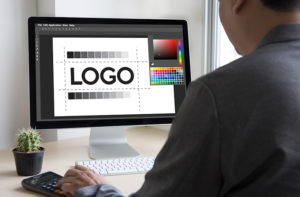While the emphasis tends to be placed on a company’s product or service, the company’s identity is equally important. When you know how to create a business identity, you can set yourself apart from the competition.
A Guide on How to Create Business Identity
The prospect of creating a business identity may sound daunting, but it is a necessary step that every business should take. Even small businesses have identities that define them. Certain actions and decisions, even unknowingly, can shape your business identity.
Considering that everything you do can affect your business identity, it is better to take an active role in helping form it. This way, you can exercise more control over how your company is perceived.
What Is a Business Identity?
Otherwise known as a corporate or company identity, a business identity is who you are as a company. It is the combination of a number of elements, including what constitutes corporate design such as logos, taglines, web design, etc.
You must understand, though, that your business identity goes beyond simple design. It also involves your corporate culture, your values, your personality, and your corporate communications.
But, what is the main purpose of corporate identity anyway? Since a corporate identity inherently focuses on design, culture, and communications, its purpose is to make your business recognizable and memorable. It allows you to distinguish your business from your competitors. More than that, a unique and consistent corporate identity can establish authority, reliability, and credibility for your business.
Business Identity vs Brand Identity Explained
Despite what others may have told you, there is a difference between business identity and brand identity. Business or corporate identity refers to the perception of your company in its entirety. It mainly involves internal activities that help mold how others view your business.
Brand identity, on the other hand, is more specific. It focuses on the individual brand or idea. When you create a brand identity design, the objective is to distinguish your products and services from similar ones from your competitors.
A business may have several brand identities under a single corporate identity. For example, Unilever has one business identity that defines the multinational corporation as a whole. It has one logo as well as a single set of values and corporate culture. However, it has multiple brands working under it, such as Axe, Dove, Vaseline, Ben & Jerry’s, and Klondike — each one with distinct branding and branding design.
How to Create Business Identity: Laying Down the Groundwork
Building a strong foundation is paramount to creating a business identity. Think about why you started this business. What motivated you? This is where your business’s mission and vision statements will come in.
Next, you will want to examine your current position in the marketplace. How do your existing customers perceive you? What can employees say about your business? Take a look at your present marketing materials. What impression do they give off? Identifying keywords in this phase will help you form your business identity.
You should also look at your competitors. What are their corporate identities? Can you learn something from what they have already started? How do you see one company compared to the other? Answering these questions will help you determine what you like and dislike about each corporate identity.
Finally, think about your target market. Your business identity should resonate with your audience and match their personality. People are more likely to patronize a company that they identify with and understand.
How Do You Establish a Business Identity?
After laying down the foundation of your business identity, it is time for the most grueling process — actually creating it. There are four elements that make up your business or corporate identity: design, communication, physical, and behavior.
Corporate Identity Design
 The process of creating a business identity shares some similarities with creating a brand identity. One similarity is the design aspect.
The process of creating a business identity shares some similarities with creating a brand identity. One similarity is the design aspect.
This involves the visuals of your business as well as its general feel. When developing your corporate design, it is important to consider the following:
- Logo. Your company logo should be unique to you. It should grab attention but, at the same time, not be too complicated. Your customers should be able to easily identify your logo and relate it to you. When creating your logo, you can use an online logo maker or hire a professional designer who will work closely with you on how you want it to look.
- Tagline. Every great company has a memorable tagline or slogan. Something short and catchy will work. Your slogan should reflect your philosophy or promise. Nike’s “Just Do It” and Apple’s “Think Different” are good examples.
- Typography. Even the typeface and style you choose can influence your business identity. Though not always, bold text generally suggests a sense of strength, while italicized text tends to project elegance and luxury. Mix and match to see which one works the best for you.
- Color Scheme. Color plays a vital role in business identity. In fact, it enhances brand recognition by up to 80 percent. Think about who you are as a company and which colors match your personality. Your colors can also identify your business. For example, purple and orange make you think of FedEx, while the combination of blue, red, yellow, and green makes you think of Google.
Corporate Communication
This focuses on how your business communicates information to customers, employees, and shareholders. Your corporation communication efforts can include internal and external communications, reputation management, and public relations. It can also involve the use of social media and your own website.
Publicity can significantly impact how your company is perceived by the general public. Contributing to a charitable cause or getting involved in the local community can give your company a favorable reputation.
You must also integrate your corporate design with all of your communication tools. From sales brochures, media kits, and correspondence to your social media profiles, everything should have a uniform look and use the same color palettes. Consistency is valuable in building a business identity.
Physical Identity
Even the physical aspects of your business can shape your corporate identity. How you decorate your office can say a lot about your personality as a business. It should also be relevant to your identity and product. For example, it would not make sense for a law firm to hang balloons across the walls but a party planning company can pull it off.
The physical element also extends to every other tangible thing your company uses. This includes employee uniforms, business cards, stationery, and company vehicles. Additionally, your marketing materials should convey your business identity and integrate your corporate design.
Corporate Behavior
When learning how to create a business identity, think about your corporate behavior. Corporate behavior exhibits your core values, philosophy, and promise. In other words, it is your nature and character as a company. It is also how you treat your customers and employees. Many companies display their values through corporate social responsibility activities, too. Your corporate behavior can affect your business identity just as much as your corporate design.
Get Started on Yours
Creating a business identity is often a challenging undertaking simply because it involves so many moving parts. But, once you know how to create a business identity, the rest pretty much follows. Even if you have a small business, distinguishing yourself in a sea of similar companies remains an imperative part of success.
Tanner Grey provides digital marketing and web design services to businesses, big or small. Call us at 844.500.1339 or contact us online to learn how we can help you.
RELATED ARTICLES:
- What to Consider When Redesigning Your Website
- The Importance of Digital Marketing in the Modern Era
- 9 Brilliant Tips To Build Brand Awareness Online







